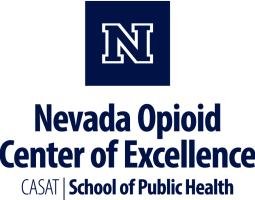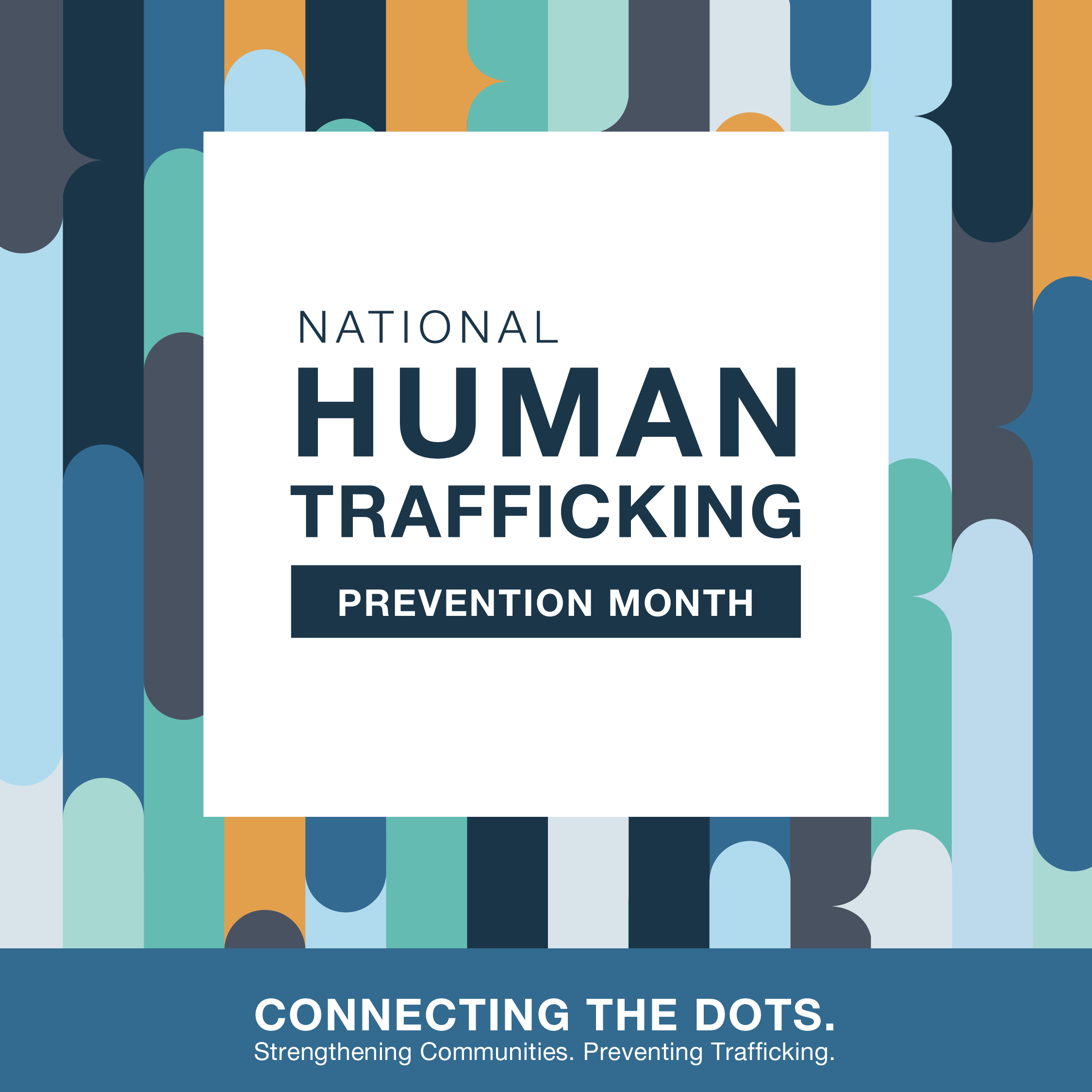January marks National Human Trafficking Prevention Month, a time to recognize the efforts made to combat human trafficking and empower individuals to take action. Human trafficking is a pervasive issue that affects millions worldwide, including vulnerable populations here in Nevada. This month, the Nevada Opioid Center of Excellence (NOCE) is proud to join the nationwide movement to raise awareness, share critical resources, and provide actionable steps to help prevent human trafficking.
Understanding Human Trafficking
Human trafficking involves the use of force, fraud, or coercion to exploit people for labor or commercial sex. Victims of trafficking often face psychological, physical, and emotional trauma, and many remain hidden in plain sight. Health professionals, social workers, and community members all play vital roles in identifying and supporting survivors.
Resources to Educate and Take Action
To help you stay informed and make a difference, here are some key resources:
From the Office on Trafficking in Persons (OTIP):
The Office on Trafficking in Persons (OTIP) is part of the U.S. Department of Health and Human Services (HHS) and works to combat human trafficking by raising awareness, supporting survivors, and coordinating prevention efforts. It provides training, resources, and funding to communities and service providers. OTIP also oversees initiatives like the National Human Trafficking Hotline and awareness campaigns.
- Human Trafficking Prevention Toolkit:
Offers actionable ways to get involved and support anti-trafficking efforts. - Training and Technical Assistance Opportunities:
Access free training programs designed to equip individuals and organizations with the skills needed to identify and respond to trafficking.
Human Trafficking and the Opioid Crisis:
- Evidence‐Based Human Trafficking Policy: Opportunities to Invest in Trauma‐Informed Strategies
This article discusses the importance of implementing trauma-informed strategies in human trafficking policies, particularly in the context of substance use and the opioid - Intersections of Human Trafficking and the Opioid Epidemic
A scholarly project that examines the contributors to the intersection between human trafficking and the opioid epidemic, offering evidence-based treatment strategies and action plans. - Human Trafficking and the Opioid Crisis
This resource from Polaris examines the intersection of human trafficking and the opioid crisis, detailing how traffickers exploit addiction to recruit and control victims. It emphasizes the importance of addressing substance use disorders as part of anti-trafficking efforts and calls for coordinated responses among healthcare, social services, and law enforcement to provide effective support for survivors.
Nevada Support Providers For Domestic Violence, Sexual Assault, and Human Trafficking
This document, provided by the Nevada Office of the Attorney General, offers an updated list of domestic violence and sexual assault service providers across Nevada, organized by county. These organizations offer critical support to victims of domestic violence, sexual assault, and human trafficking, including crisis hotlines, advocacy services, emergency shelter, and legal assistance. The resource list ensures that individuals in need can connect with local providers for immediate and long-term support.
10 Things You Can Do to Help Stop Human Trafficking
- Know the Facts.
Find out how human trafficking happens in the United States. Be alert to situations the people around you may be experiencing. - Seek Help.
The National Human Trafficking Hotline (NHTH) provides free, confidential support, 24/7. Call 1-888-373-7888, text 233733, or chat at humantraffickinghotline.org/chat. - Increase Training.
Check out on-demand and customizable trainings available through the National Human Trafficking Training and Technical Assistance Center, including SOAR to Health and Wellness. - Be There for People at Risk.
Traffickers often target people who are facing a difficult situation, don’t have resources to meet their needs, or are missing social connections. Your support could make the difference. - Take Action in Your Community.
Locate local anti-trafficking organizations. Volunteer, donate resources, or help raise awareness. Work with others in your community to create “protective factors” for people who are at risk or experiencing trafficking. - Build Partnerships.
Connect with professionals and institutions—such as schools and health care providers—that may be serving people who are experiencing human trafficking. - Tap Your Skills and Networks.
Do you work in a school or healthcare setting? Create a human trafficking safety protocol. Are you an attorney? Consider offering pro-bono services. - Think Before You Buy.
Consider how you shop and eat. Research which goods may be produced by child or forced labor, and choose alternatives when possible. - Stay Current.
Sign up for OTIP’s listserv to stay informed. Follow OTIP’s LinkedIn and the Administration for Children and Families’ Facebook, Instagram, or X (formerly Twitter). - Speak Out.
Share resources from the HHS Look Beneath the Surface Campaign. Let your network know about the National Human Trafficking Hotline. Inform your elected representatives about what your community needs.
FREE Webinar – In Plain Sight: Confronting the Human Trafficking Crisis in Healthcare Settings
We invite you to join our free webinar, In Plain Sight: Confronting the Human Trafficking Crisis in Healthcare Settings, on January 29, 2025, from 4:00 PM to 6:00 PM PST. This session will:
- Define the types of human trafficking and identify at-risk populations.
- Differentiate between sex trafficking, sex work, and smuggling.
- Highlight how traffickers exploit addiction and shared risk factors to control victims.
- Provide tools for identifying trafficked individuals through clinical signs and mandated reporting.
- Share trauma-informed care strategies and harm reduction tools to support victims.
- Discuss the critical role healthcare providers play in identifying and reporting trafficking cases.
- Identify local and national resources for trafficked persons.
Get Involved
National Human Trafficking Prevention Month is a call to action for everyone. Whether by attending a training, sharing resources, or registering for our webinar, every effort contributes to creating a safer and more informed community. Together, we can help end human trafficking and support those affected by it.
Let’s work together to shine a light on this hidden crisis.





